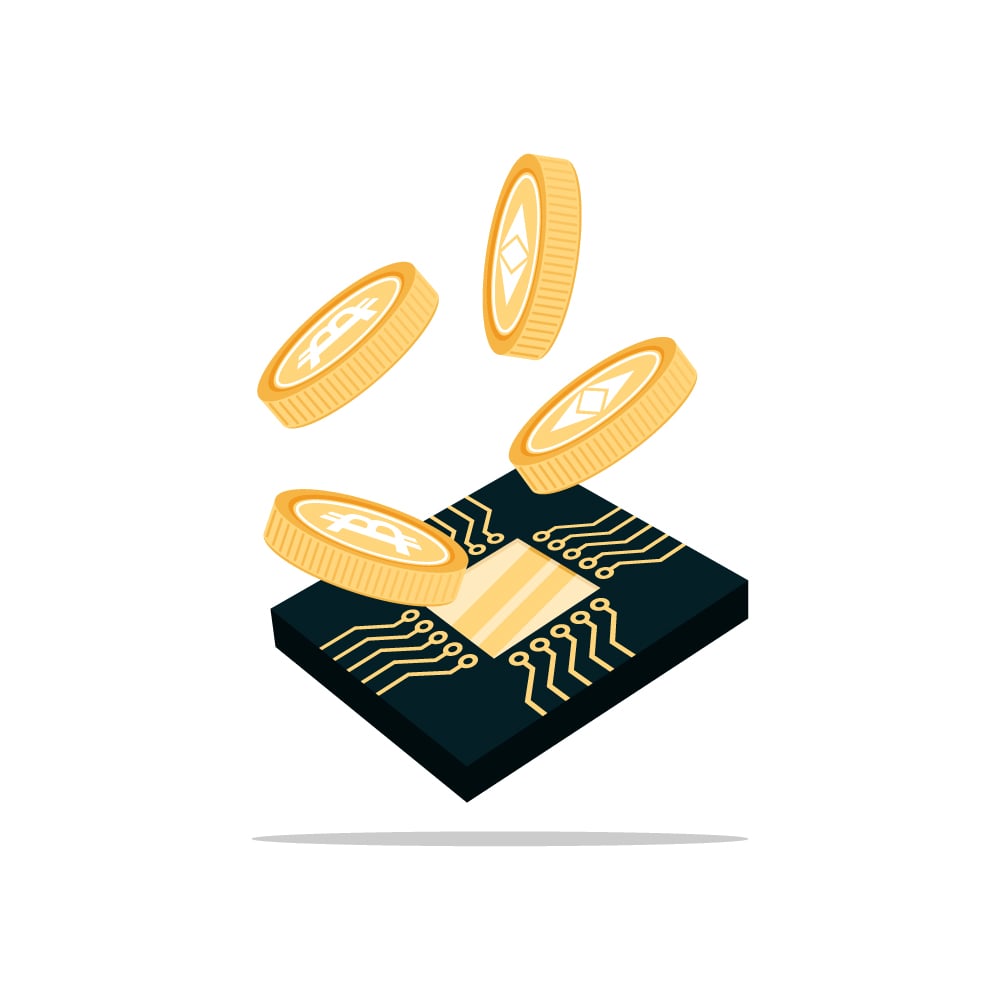Did you know that the annual electricity consumption dedicated to the Bitcoin mining process is comparable to the country of Poland? According to the Cambridge Centre for Alternative Finance, that number stands at 162 TWh (terawatt-hours, equivalent to one trillion watt-hours)…
In fact, according to the International Energy Agency (IEA), cryptocurrencies supposedly consumed 110 TWh of electricity by 2022, which was 0.4% of the global demand annually. It’s no secret that cryptocurrencies have long been condemned over their environmental record, and that too in an era when traditional investments have also been going green. Yes, there are options for green cryptocurrencies to invest in now, but the bigger question is: can cryptocurrency mining become sustainable in the future?

Cryptocurrency: The Environmental Footprint
According to the United Nations University Institute for Water, Environment and Health (UNU-INWEH), Bitcoin had a significant land, water, and carbon footprint in 2020-2021. In fact, its water footprint (for cooling systems) could have met the needs of more than 300 million people in sub-Saharan Africa and its carbon footprint could be equated to burning 38 billion tonnes of coal. If that wasn’t enough, the Bitcoin network’s electricity consumption is more than that of many developed countries, like Sweden and Norway.
Clearly, this aspect of crypto could turn into something of a dealbreaker for investors who are serious about achieving ESG goals.
It also doesn’t help that crypto activities lack some serious regulations. After years of being labelled as “get-rich-quick” ventures and sitting on the sidelines of financial markets, crypto investments are finally becoming mainstream. However, there’s little regulation to ensure that investors adopt practices in line with ESG values. Moreover, some of the major issues plaguing these markets include the use of cryptocurrencies for price manipulation, scamming, and money laundering.

Sustainable Cryptocurrency Mining
Just because it has its challenges doesn’t mean that cryptocurrency mining can’t be green or sustainable. To understand whether and how crypto mining is sustainable or green, it’s important to understand how a cryptocurrency mining operation describes its energy-sourcing practices.
Some ways to communicate sustainability initiatives involve stating that the cryptocurrency mining process is “carbon-neutral” or “zero carbon” – but again, these are not the same thing. Zero-carbon means that the product/service that was created resulted in no carbon emissions being produced. On the other hand, carbon neutral involves the removal of as much carbon as was created from the atmosphere, after it is created. This could be through carbon offsets or credits, i.e., payments for supporting activities that support carbon removal from the atmosphere, such as planting or preserving forests.
The idea of being carbon neutral has been criticized as carbon offset/credit activities might not permanently reduce carbon. For instance, deforestation could happen in another area, offsetting the pluses of protecting another forested area. That being said, crypto mining companies purchase carbon credits from other companies, helping offset the amount of emissions created overall. Another alternative is to employ or use in combination renewable energy sources such as hydroelectric, wind, and solar power for mining operations, which further help reduce the carbon footprint.
A huge approach towards sustainability is the adoption of more energy-efficient consensus mechanisms to validate transactions on the blockchain. The emerging favourite, the PoS (Proof-of-Stake) consensus mechanism, requires crypto miners to advance a small amount of cryptocurrency to enter a lottery where they choose to be assigned transactions that they will verify. This not only greatly lowers the risk of fraudulent transactions being approved but also eliminates the intense competitive computational element of the now-widely-used PoW (Proof-of-Work) mechanism. The PoS mechanism allows every machine to work on a different problem, thus greatly optimising the energy consumed.

What Are Cryptocurrencies Doing?
Surprisingly, quite a bit. Not just emerging green cryptocurrencies but even veteran ones are now employing new consensus mechanisms. Take Ethereum, for instance, which transitioned from POW to POS consensus process in 2022 with its Ethereum 2.0 upgrade, reducing its energy consumption by 99.5%. Even cryptocurrencies like Tezos and Cardano use PoS. Meanwhile, Bitcoin mining operations in regions like Canada and Iceland are increasingly using renewable energy, taking advantage of the abundant hydroelectric and geothermal resources.
That’s not all; there are technological innovations like sharding and Layer 2 solutions that are helping make crypto sustainable too. For instance, Ethereum’s and Bitcoin’s Optimistic Rollups and Lightning Network, both Layer 2 solutions, process off-chain transactions, reducing energy consumption. In fact, Ethereum 2.0 even implements sharding, dividing the blockchain into smaller sections and allowing simultaneous transaction processing, thus reducing energy use further.
And, of course, who can ignore the Pi Network, the high-flying rising star of the crypto universe and its pioneering eco-friendly mining approach? Not only does the Pi Network use PoS but it also allows users to mine cryptocurrency effortlessly on their smartphones, a historic first for any cryptocurrency. So, there’s no draining of the device’s batteries, no energy-guzzling setup, and no skyrocketing electricity bills. That’s why the Pi Network has been gaining so much traction, appealing to eco-conscious crypto minds across the world.
While it’s challenging to make a green case for cryptocurrency and with ESG values, it’s certainly not unreachable.
In case you missed:
- Bitcoin Halving: Everything You Want to Know
- Everything you need to know about Pi Network
- Green Data Centres: Future-ready for Sustainable Digital Transformation
- A Beginner’s Guide to Cryptocurrency Trading in India – Part 2
- A Beginner’s Guide to Cryptocurrency Trading in India – Part 1
- Should I Use An Anonymous Crypto Wallet?
- The Pi Network: IOUs, Coins, And The Network’s Future
- The Life of Pi Network – FAQs and Everything Else You Want To Know
- Pi Day 2025: What Awaits The Pi Network on March 14th?
- Phantom Wallet: The Fastest-Growing Crypto Wallet










